
Osteochondrosis affecting the thoracic spine is often disguised as pathology of internal organs. This is indicated by heart pain, shortness of breath, shortness of breath when inhaling, and panic attacks. Therefore, the diagnosis of thoracic osteochondrosis is quite difficult. After detection, conservative treatment is performed using medication, physiotherapy, exercise therapy. And with severe damage to the chest and spinal discs, surgical intervention is required.
A brief description of the disease
Thorax osteochondrosis is a degenerative-dystrophic disease of the spine. In the early stages of its development, the intervertebral disc is slowly destroyed. They become thin, brittle, and radial cracks appear on the surface. To stabilize the thoracic segment affected by osteochondrosis, vertebral bone tissue grows with the formation of acute growth - osteophytes. This is the reason for the restriction of sharp movements, compression of blood vessels and roots of the spine.
Degree of pathology
Levels of osteochondrosis - a group of symptoms characteristic of a particular radiographic level. The more deformed the disc and vertebrae, the clearer its clinical manifestations. The severity of the pathology always determines the tactics of treatment, it must be taken into account when choosing a drug and the method of its use.
Degree
X-ray images do not usually show changes. But the intervertebral disc is already beginning to collapse due to the inability to retain moisture, which is necessary for tissue recovery. Sometimes there is a slight discomfort in the back, which quickly disappears after a short rest. Grade 1 osteochondrosis is usually found by chance during the diagnosis of another disease.
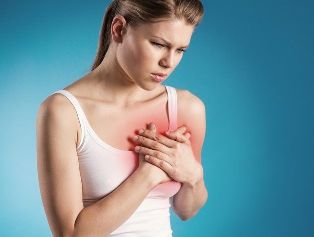
degree II
The fibrous ring becomes loose, fibrous. One of the slits on the surface of the disc increases, the nucleus pulposus extends there. On radiography, a decrease in the distance between adjacent vertebral bodies can be seen due to a decrease in disc height. As a result of constant compensatory muscle tension, limited movement of the thoracic area, and moderate painful sensations occur.
III degrees
The integrity of the annulus fibrosus is violated, until the nucleus pulposus is squeezed out of it. The protrusion of the hernia is formed - the main cause of severe symptoms and severe complications of chest osteochondrosis. Vertical vertebral body, single osteophyte formed. Pain in the thoracic region becomes constant, the range of motion in the spine is significantly reduced.
grade IV
X-ray images clearly show the growth of connective tissue, the formation of various osteophytes. The adjacent vertebral body is blocked, not moving. Radicular syndrome develops, discogenic myelopathy often occurs - compression of the spinal cord, dangerous due to its irreversible consequences. A person barely serves himself in daily life, losing the ability to perform professional duties.
Causes of osteochondrosis of the thoracic spine
Thorax osteochondrosis in people over the age of 40-45 years develops due to the natural aging of the body: slows the recovery reaction, decreases collagen production, which causes elasticity, ligament strength. At a younger age, this occurs due to increased pressure on the spine or with a background of pathology already present in the body:
- rheumatoid arthritis, systemic lupus erythematosus, scleroderma, ankylosing spondylitis;
- endocrine and metabolic diseases, for example, diabetes mellitus, gout, hypothyroidism, hyperthyroidism;
- congenital and acquired anomalies, including kyphosis, scoliosis.
Previous spinal cord injuries, an unstable lifestyle, and a lack of vitamins and micro-elements in the body can cause premature disc destruction.
Characteristics and symptoms of the disease

Thorax osteochondrosis develops gradually, initially without showing itself. In this habit there is a danger. A person experiences pain and discomfort in the back due to superficial muscle fatigue after a day of work, work at home or in the garden and not getting medical help. Therefore, patients are usually diagnosed with pathology 2-3 degrees of severity, which is difficult to treat conservatively.
Initially
During periods of exacerbation, pathology can present itself as pain between the shoulder blades, which occurs when bending, twisting the body. The range of motion is reduced, and there are many signs of a certain relapse.
Chest pain
In osteochondrosis, chest pain first appears. They are not clearly localized, they can be given to the hands, to the clavicle, ribs. The pain in the heart is severe or moderate, resembling an attack of angina pectoris, not eliminated by taking nitroglycerin. Sometimes it is similar to the sensation that occurs during the exacerbation of cholecystitis, pancreatitis. But unlike pancreatic or gallbladder lesions, pain is not accompanied by increased gas production, heartburn, and bloating.
Chest constraints
Pain between the shoulder blades is sometimes accompanied by a feeling of shortness of breath while inhaling. One is expected to be scared, not understanding the causes of this situation. Doctors recommend not to panic, but sit and measure the pulse. If the value obtained does not exceed 100 beats per minute, then the likelihood of lung or heart disorders is very low.
Other symptoms
Gradually, the symptoms of osteochondrosis are exacerbated by impaired sensitivity. There is a numb sensation, tingling, crawling crawling. From time to time, situations similar to panic attacks occur. They are characterized by fear, increased heart rate, excessive sweating, and cold sweats. If these symptoms are accompanied by chest pain, then it is necessary to take nitroglycerin and contact a doctor. A similar set of symptoms may indicate myocardial infarction.

The roots of the spine, located in the thoracic region, activate the internal organs. When they are irritated, compresses, the work of the gastrointestinal tract and liver will be disrupted. Peristalsis is disturbed, epigastric pain, heartburn, belching occur.
Signs at the subacute level
After exacerbation, the subacute stage in the course of thoracic osteochondrosis begins. The pain and breathing problems persist, but they get worse. One no longer seeks a comfortable body position for a long time, where the pain is not felt. The duration of the subacute stage is up to two weeks. If all medical recommendations are followed, remission occurs, which is characterized by the absence of obvious symptoms. Violation of the regimen leads to an increase in new osteochondrosis.
Remisi
At the level of remission, mild discomfort may occur when the weather changes or hypothermia. Acute pain appears only with the severity of osteochondrosis 2-4 degrees due to excessive sharp rotation or inclination of the body. Chronic pathological inflammation, stress, increased physical activity, and prolonged stay in one position of the body can lead to another relapse.
Disease Diagnostic Principles
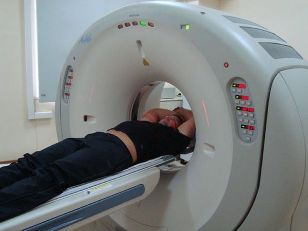
Neurologists make primary diagnoses based on patient complaints, anamnesis data. On external examination, he found a point in the thoracic area, with pressure where pain occurred. Conducting functional tests allows you to assess reflex safety, to identify sensitivity disturbances. Of the instrumental methods, radiography is the most informative. But for a detailed study of the spinal segment, CT, MRI can be done. To exclude diseases of the cardiovascular system, patients are given an ECG.
First aid for exacerbations
Pain during recurrence of thoracic osteochondrosis is acute, penetrating, so a person should be given first aid. He should be calmed down, placed on a hard surface, covered with a warm blanket. If relapse is accompanied by an increase in heart rate, shortness of breath, increased anxiety, then you need to contact a doctor. Any non-steroidal anti-inflammatory drug can be taken to relieve pain between the shoulder blades.
How to treat osteochondrosis of the chest
Only an integrated approach to treatment will eliminate all symptoms of osteochondrosis, slow or stop its spread completely to healthy discs and vertebrae. With pathology 1-2 degrees of severity, conservative therapy methods are used. For 3-4 degree osteochondrosis, the formation of large hernias is characteristic. Surgical treatment may be needed to relieve pressure on the blood vessels and roots of the spine.
Setup
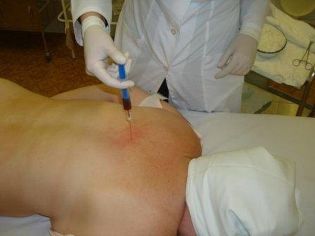
In the treatment of thoracic osteochondrosis, drugs from various clinical and pharmacological groups are used. In the early stages, agents for parenteral administration are usually used, which quickly provide a therapeutic effect. A few days later, the injection solution was replaced with a safer tablet, ointment, and patch.
Nonsteroidal anti-inflammatory drugs (NSAIDs)
NSAIDs have significant analgesic, anti-inflammatory, anti-edema effects. Administration of intramuscular solutions makes it possible to stop acute pain. To eliminate discomfort between the shoulder blades, a local application agent is used. And with mild pain, NSAIDs for oral administration work well.Relax the muscles
Muscle relaxation is used to relieve muscle spasms in response to severe pain. Often, treatment of chest osteochondrosis begins with the administration of intramuscular drugs, which, in addition to tolperisone muscle relaxants, include anesthesia.
Chondroprotectors
If the pathology is severity level 1, the reception of chondroprotectors helps restore damaged discs. In other cases, they are prescribed to increase metabolism in the affected spinal segment, to prevent the development of the disease.
Preparation of vitamin B
Its use helps to improve blood flow, improve the function of the peripheral nervous system, restore trophism and nerves. Vitamin B complex has a beneficial effect on degenerative diseases of the nervous and locomotor systems.
Physiotherapy training
If there is 1 degree thoracic osteochondrosis, daily exercise therapy allows you to do without the use of medication. Recovery occurs by strengthening muscles, increasing blood supply to tissues with nutrients. In other cases, regular exercise and exercise help prevent the involvement of healthy spinal segments in destructive processes, and prolong the degree of remission.
Complex from standing position
In a standing position, the following therapy exercises are most therapeutically effective:
- place the palms on the shoulders, bent forward, while lifting the bent legs, as if trying to reach the knees opposite your elbows;
- Raise left hand up, tilt right. Exercise in the opposite direction;
- Spread your legs shoulder-width apart, raise your arms. Lean forward, touching the foot opposite your palm.
The number of repetitions is 10-12 times in 2-3 sets.
From the cartilage position
To complete this workout, you will need a gym mat or a double thick blanket:
- lying on your stomach, raising your arms and legs;
- lie on your back, lift your upper body, stretch your palms to your feet;
- lie on your back, bend one leg, roll to the other, try to touch the floor with your knees.
Each exercise should be done 7-10 times.
Sit
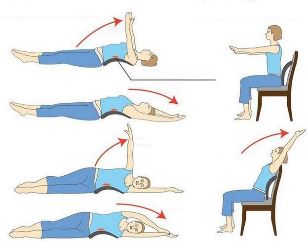
When performing such exercises, sharp high-amplitude movements, including rotation, should be avoided:
- sit on the floor, stretch forward, try to touch the foot opposite your palms;
- sit in a chair or bench, reach out and slowly turn from side to side;
- sit on the floor, wrap your arms around your knees, pull as close as possible to your chest.
In the first lesson, the exercise should be repeated 5-7 times, after about a month - 15-20 times.
Physiotherapy
Magnetic therapy, laser therapy, UHF therapy, sinusoidal current, shock wave therapy, application with paraffin and ozokerite are used in the treatment of chest osteochondrosis. In case of exacerbation, electrophoresis, ultraphonophoresis with glucocorticosteroids, anesthetics, B vitamins, chondroprotectors are performed.
Sort
A massage performed by a specialist helps to relieve pain between the shoulder blades, to relax the spasmodic skeletal muscle.
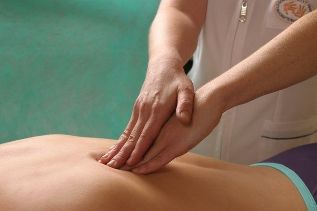
For osteochondrosis, all types of massage are therapeutically effective - classical, vacuum, acupuncture, connective tissue. At home, self-massage is done easily using a wooden or electric hand massage.
Acupuncture
Acupuncture is a method of treating pathology by inserting a needle into a bioactive point in the human body. They are thin, short, so when piercing the skin, only discomfort sometimes occurs. But this effect is enough for the production of nutrients in the body with analgesic and anti-inflammatory effects.
Nutrition
Nutritionists recommend that patients with osteochondrosis of the chest release fatty meats, rich soups, smoked meats, homemade marinades and mills. It is necessary to limit the amount of salt in the diet, which provokes the formation of edema. Every day you need to drink about 2. 5 liters of liquid - water, vegetable juice, berry drinks, fruit compote.
People's solution
Decoctions and infusions of medicinal plants, ointments, alcohols and rubbing oils, compresses are allowed by neurologists for use after primary therapy. Folk remedies are used to relieve mild pain between the shoulder blades, sometimes arising after physical exercise.
Celery root
Peel a large celery root, finely chop, squeeze the juice. Add 100 g of chopped fresh celery. Take 3 tablespoons up to 4 times a day with food to clean the vertebral structure from harmful salt deposits.
Sunflower Roots
Pour a teaspoon of crushed dried sunflower root with a glass of hot water. Boil, simmer over low heat for 20 minutes, cool under a lid, drain. Drink 3-4 times a day.
Home ointment
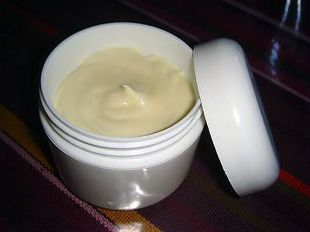
In a mortar, grind one tablespoon of turpentine gum and condensed honey, add 2 drops of each essential oil of juniper, rosemary, eucalyptus. Injection in small portions of 100 g of petroleum jelly. Stir, transfer to jar, store in refrigerator, rub on back for pain.
During pregnancy
Many systemic analgesics are contraindicated during pregnancy, so neurologists prefer drugs for external use - ointments, gels, patches. If you can not do it without taking the pill, the dose will be significantly reduced. During childbirth, the main methods of therapy for chest osteochondrosis are massage and exercise therapy.
Possible consequences
In the absence of medical intervention, thoracic osteochondrosis can cause pneumosclerosis, arrhythmias, vegetative-vascular dystonia, deterioration of the gastrointestinal tract, impaired sexual function and reproduction in women and men.
Prevention and prognosis
Prognosis is favored with timely detection of the disease, competent comprehensive treatment. If complications of thoracic osteochondrosis have developed, then only adherence to all medical recommendations makes it possible to achieve stable remission.
As pathological prophylaxis, neurologists recommend excluding factors that provoke it from normal lifestyle. These are overweight, low physical activity, lack of vitamins and minerals, excessive stress on the spine.












































